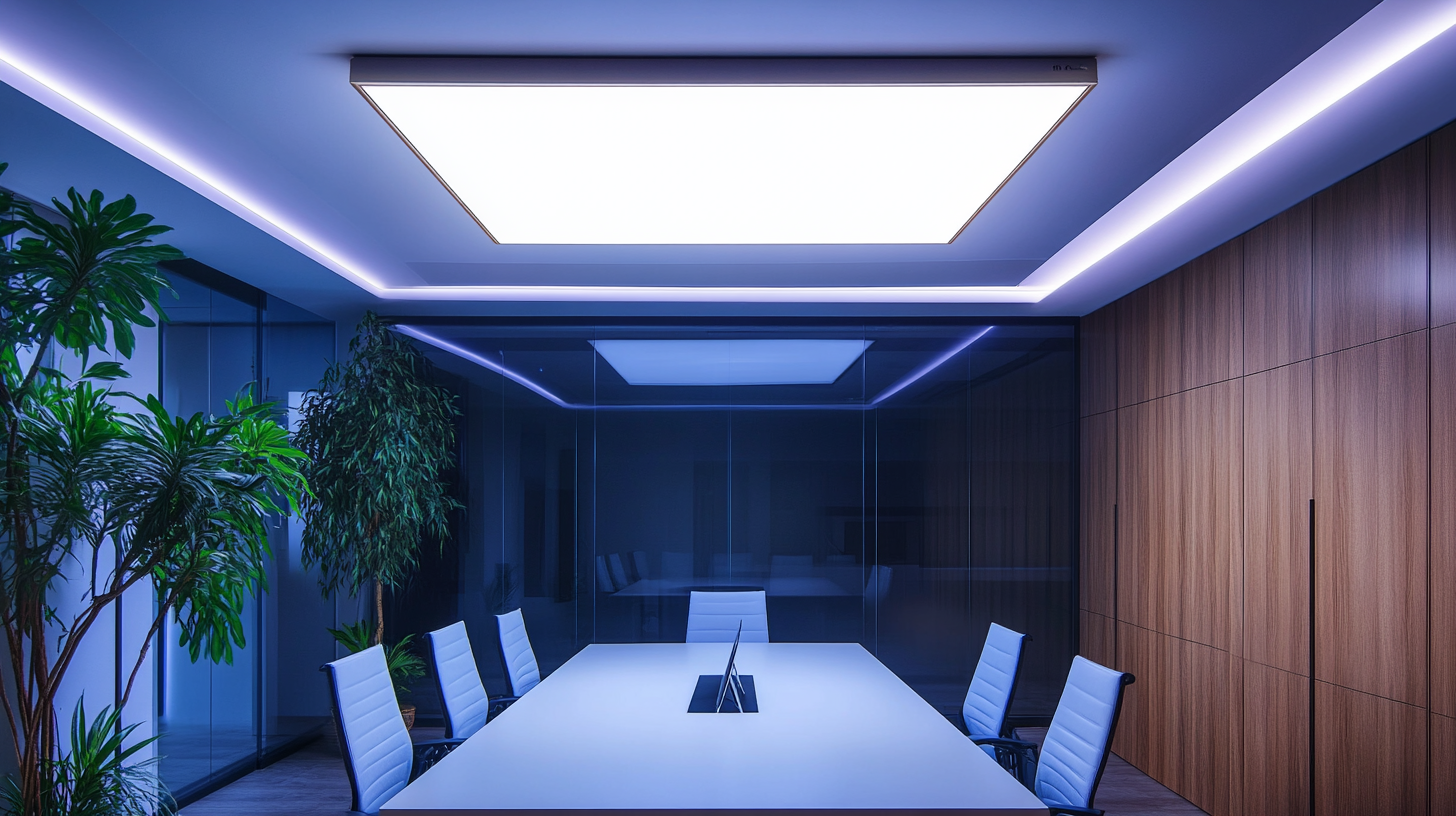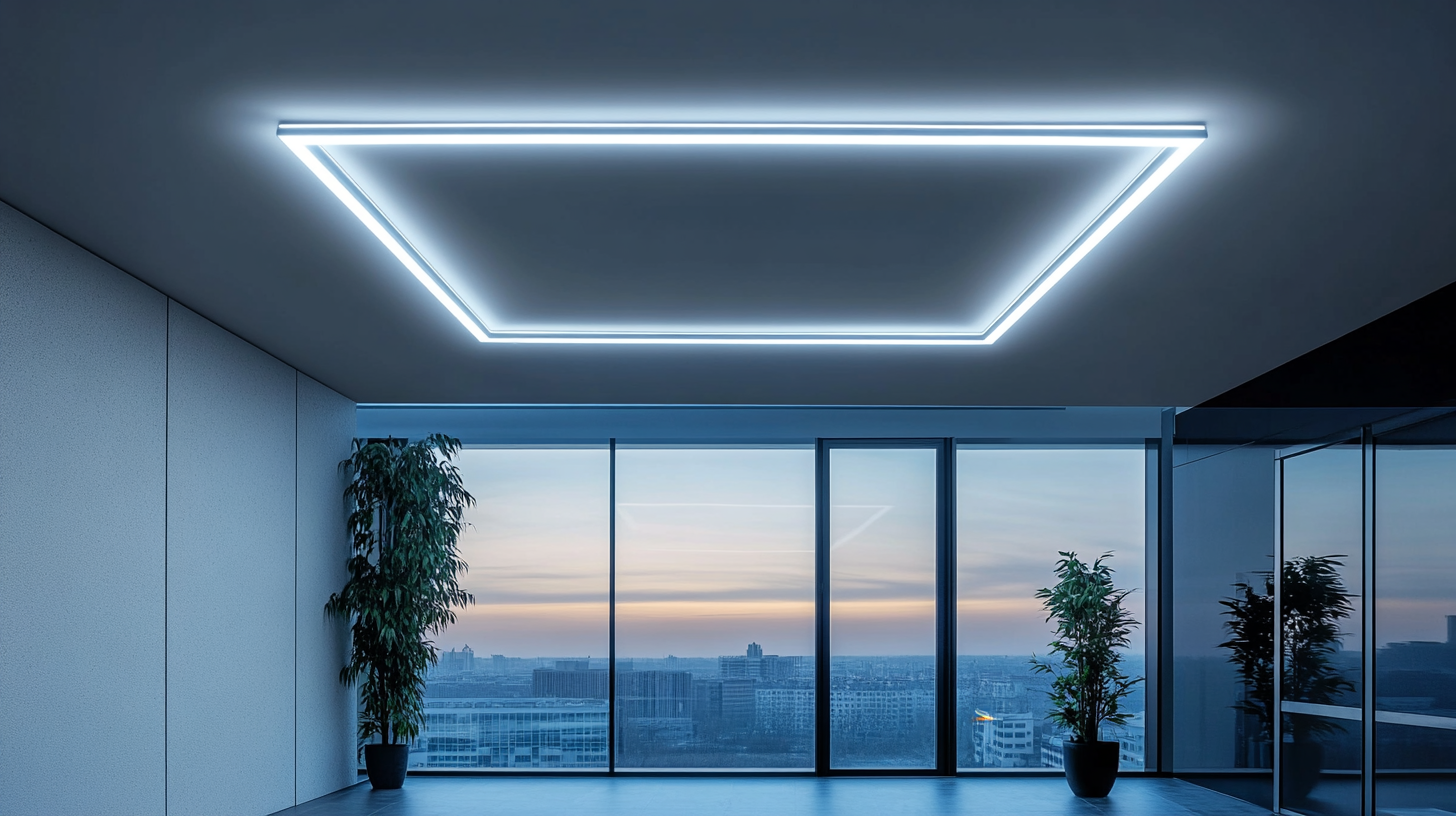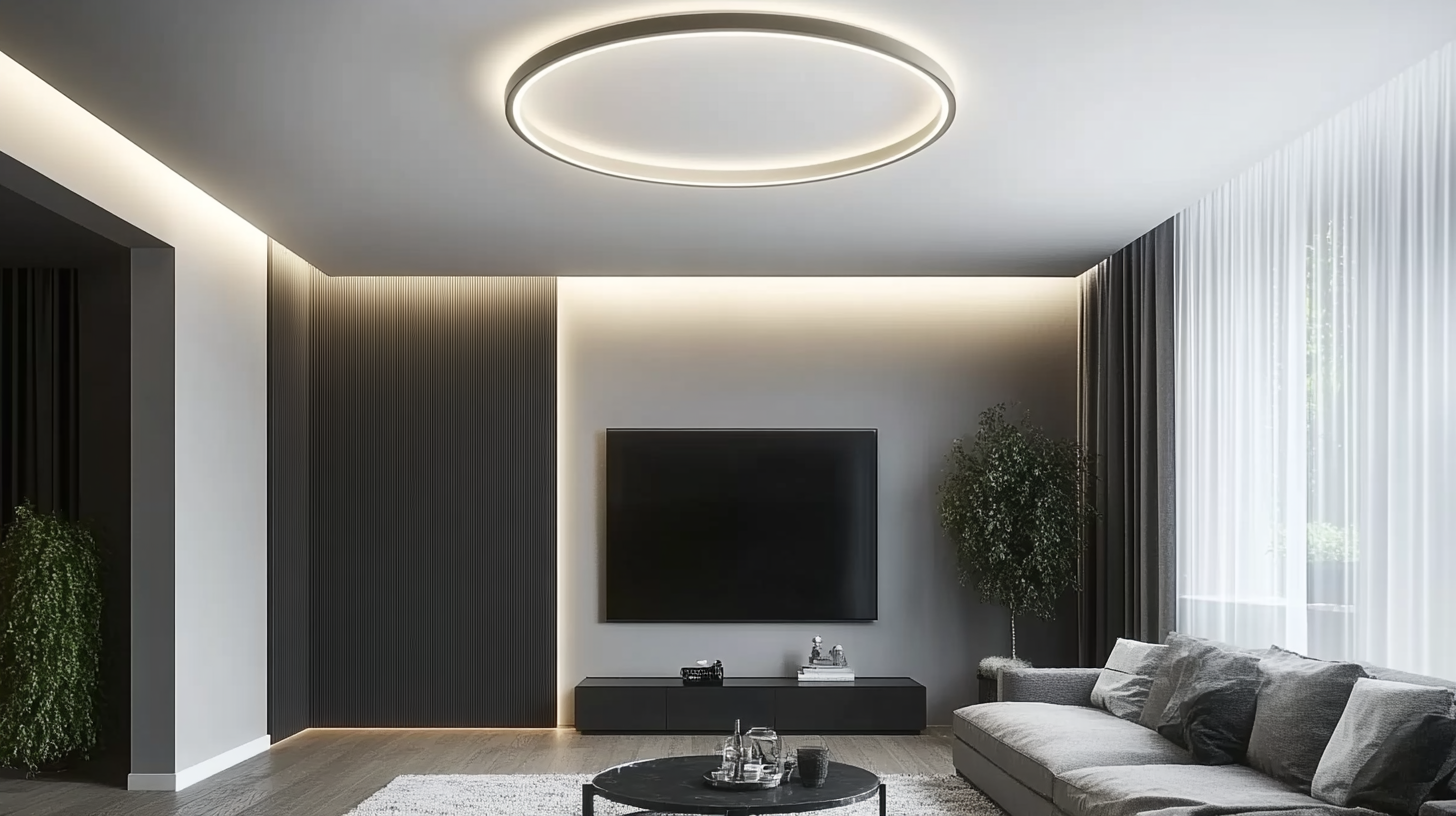How to Choose the Best Led Ceiling Lights for Your Home and Office
When it comes to illuminating your home or office, choosing the right lighting is crucial for both functionality and aesthetics. Ceiling lights led have become increasingly popular due to their energy efficiency, longevity, and versatility. With a wide range of styles, shapes, and brightness levels available, it's essential to navigate through the options to find the perfect fit for your space. Proper lighting not only enhances the ambiance but also influences productivity and mood, making it vital to consider the specific needs of each room. In this blog, we will explore the key factors to consider when selecting the best ceiling lights led for your home or office, ensuring you make an informed decision that elevates your environment while meeting your practical requirements.

Understanding the Different Types of LED Ceiling Lights Available
When considering LED ceiling lights for your home and office, it's crucial to understand the diverse types available in the market. LED lights offer various forms such as recessed lights, surface-mounted fixtures, and pendant lights, each providing unique benefits and aesthetics. A recent study highlighted that the shift towards LED roadway lighting has positively impacted driver alertness, indicating the efficiency and clarity that LED technology can bring—qualities that can also enhance the ambiance and functionality of indoor spaces.
Energy efficiency is another key advantage of LED ceiling lights. Compared to traditional light bulbs, LEDs consume significantly less energy, which not only translates to lower electricity bills but also supports sustainability efforts. Reports suggest that switching to LED lighting can reduce energy consumption by up to 80%. Furthermore, choosing the right color temperature and brightness—ranging from warm white to cool daylight—can create a tailored lighting experience, improving both mood and productivity in your work environment. As you explore options, paying attention to these factors will help you select the best LED ceiling lights that suit your specific needs.

Key Factors to Consider When Selecting LED Ceiling Lights
Selecting the ideal LED ceiling lights for your home or office involves understanding several key factors that can greatly enhance your space's ambiance and functionality. One primary consideration is the color temperature of the lights. Warm white lights (around 2700K) create a cozy atmosphere, perfect for living rooms or bedrooms, while cooler tones (4000K to 5000K) are ideal for workspaces as they promote alertness and focus. Recent studies demonstrate how colored lights can significantly impact our emotional responses; thus, choosing the right hue can set the desired mood for different occasions.
Another essential factor is the brightness and adjustability of the lighting. Today's smart LED solutions offer advanced technology that allows users to control brightness and even color through apps or voice commands. This flexibility means you can tailor the lighting to the specific needs of your environment, whether it's a bright setting for reading or a dim ambiance for a movie night. Additionally, energy efficiency is crucial; opting for LED lights not only reduces electricity bills but also extends the lifespan of your fixtures. In 2025, smart lighting solutions continue to evolve, making it easier than ever to find the perfect combination of functionality and style for any room.

Evaluating Brightness and Color Temperature for Your Space
When selecting LED ceiling lights for your home or office, evaluating brightness and color temperature is crucial. Brightness is measured in lumens, with higher values indicating brighter lights. According to a report by the U.S. Department of Energy, LED lighting can provide up to 100 lumens per watt, significantly enhancing energy efficiency compared to traditional incandescent bulbs. For residential spaces, around 1,500 to 2,000 lumens is typically recommended for general lighting, but this can vary based on room size and purpose.
Color temperature, measured in Kelvin (K), profoundly impacts the ambiance of a space. Warmer tones (2700K to 3000K) create a cozy, inviting atmosphere, ideal for living rooms and bedrooms, while cooler tones (4000K to 5000K) are suited for work environments, promoting focus and productivity. Research from the Lighting Research Center suggests that cooler color temperatures can enhance concentration and reduce eye strain in office settings. Thus, understanding the interplay between brightness and color temperature is essential in selecting the right LED lights to optimize both comfort and functionality in various environments.
Distribution of LED Ceiling Light Preferences
Tips for Installation and Maintenance of LED Ceiling Lights
When installing LED ceiling lights, it’s essential to consider a few key factors to ensure a successful setup. Start by selecting the right location for your fixtures, taking into account the layout of the room and existing power sources. Make sure that the lights create an even distribution of illumination, enhancing both functionality and aesthetics. It's advisable to use a ceiling light cover that complements your decor, as this can significantly impact the overall ambiance of the space.
Maintenance of LED ceiling lights is relatively straightforward but crucial for their longevity and performance. Regularly dust the fixtures to prevent buildup that can diminish brightness and efficiency. If you notice flickering or dimming, check for loose connections or replace the bulbs as needed. Additionally, consider using dimmer switches to adjust brightness levels according to your mood and activity, which can also extend the lifespan of your fixtures. By following these tips, you can ensure your LED ceiling lights not only look great but also function optimally for years to come.
Cost-Effectiveness and Energy Efficiency of LED Lighting Solutions
When considering the illumination in your home or office, understanding the cost-effectiveness and energy efficiency of LED lighting solutions is paramount. LED lights, known for their longevity and low energy consumption, significantly reduce electricity bills compared to traditional incandescent or fluorescent bulbs. While the initial investment may be higher, the prolonged lifespan of LEDs—often exceeding 25,000 hours—means fewer replacements and maintenance costs over time. This makes them a financially smart choice for both residential and commercial spaces.
Moreover, the energy efficiency of LED lighting is impressive. LEDs convert approximately 80% of their energy into light, while traditional bulbs waste much of that energy as heat. This high efficiency not only contributes to lower energy costs but also supports sustainable practices by reducing your overall carbon footprint. By choosing LED ceiling lights, you not only enhance the aesthetic of your space but also promote a greener environment, aligning your choices with contemporary values of sustainability and economic prudence.
How to Choose the Best Led Ceiling Lights for Your Home and Office
| Feature | Description | Benefits | Cost-Effectiveness | Energy Efficiency |
|---|---|---|---|---|
| Brightness | Measured in Lumens, indicates how much light the fixture produces. | Enhanced visibility and mood lighting. | Higher lumens with lower wattage mean lower electricity bills. | LEDs provide higher lumens per watt, making them more efficient. |
| Color Temperature | Ranges from warm (3000K) to cool (6500K) white light. | Different temperatures can affect mood and productivity. | Choosing the right temperature can save on replacements. | Energy consumption varies slightly with color but is minor compared to incandescent options. |
| Lifespan | LEDs last 15,000 to 50,000 hours on average. | Long-lasting illumination requiring fewer replacements. | Fewer replacements reduce overall lighting costs. | Less waste and resource usage over time. |
| Dimmability | Ability to adjust light output using dimmer switches. | Creates atmosphere and saves energy when less light is needed. | Reduced energy use during lower brightness settings. | Increased lifespan due to lower operating levels. |
| Design Options | Varied styles from recessed to pendant lights. | Enhance home or office décor while providing lighting. | Choosing modern designs can lower overall decor costs. | Energy savings can be significant across diverse styles. |

